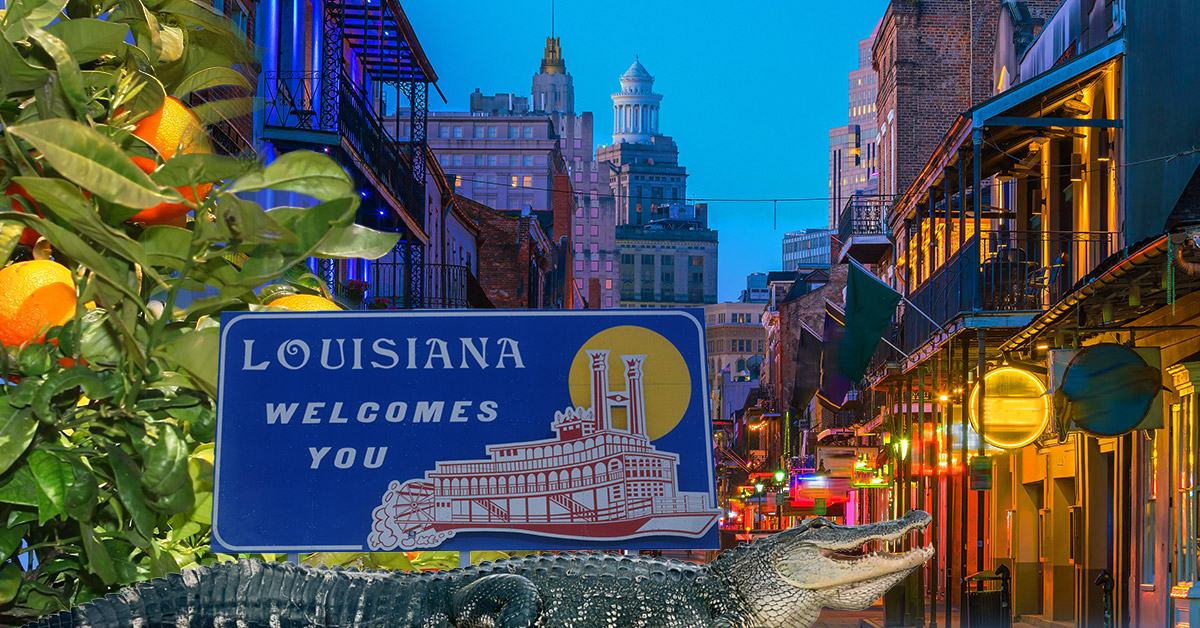The Southeast region of the U.S. — comprised of Alabama, Arkansas, Georgia, Louisiana, Kentucky, Mississippi and Tennessee — keeps moving forward. Once the heart of the old Confederacy, today’s new Southern economy is highly diversified and competitive with other regions.
The gross domestic product (GDP) growth in these seven states was generally higher than the U.S. average of 2.1% annualized growth as of third-quarter 2019. Kentucky, Alabama and Mississippi were the exceptions with slower-than-average growth of 1.5%, 1.7% and 1.9%, respectively. The region’s highest annualized GDP growth was in Arkansas and Louisiana at 2.9%.
The employment picture in the Southeast is more mixed, however. Wages significantly lag the national average. None of the seven states had median wages higher than the U.S. median wage of $51,960 as of mid-2018. Wages at that time ranged from a high of $48,280 in Georgia to a low of $39,420 in Mississippi. As of this past December, the regional unemployment rates ranged from a low of 2.7% in Alabama to a high of 5.7% in Mississippi.

Traditionally, poverty has plagued the Southeast more than other regions and these states tend to rate low in quality-of-life surveys. U.S. News & World Report placed Louisiana, Alabama and Mississippi at the bottom of its 2019 “Best States” rankings, which weighs factors such as health care, education, infrastructure and economy. Georgia, at No. 17, was the only Southeast state ranked in the top 20.
This region, however, has a rich history and culture. The region’s largest city is Atlanta, which has a metro-area population of 5.9 million. Other notable cities include New Orleans; Birmingham, Alabama; Louisville, Kentucky; Little Rock, Arkansas; Jackson, Mississippi; and the Tennessee cities of Memphis and Nashville.
All seven states have been successful in attracting business. The region generally offers lower taxes and cost-of-living expenses, a milder climate, good transportation routes and business-friendly regulations. Important industries include aerospace, auto and machinery manufacturing, steel production, chemicals and oil refining.
In Arkansas, the timber industry employs roughly 28,000 workers, while more than 85,000 state residents are employed by distribution centers or trucking companies. Alabama’s Gulf Coast is a chemical corridor with more than 30 companies clustered around the city of Mobile, while Louisiana is a primary energy-producing state with offshore crude-oil mining and several refineries.
Georgia has a thriving film and music industry, as well as a large military presence at nine bases. Kentucky is the nation’s No. 1 per-capita producer of cars, light trucks and SUVs with Ford Motor Co., Toyota and General Motors leading the way. Aerospace and gaming are major industries in Tennessee and Mississippi, respectively.
Atlanta Office Market
The office vacancy rate in Atlanta rose to a recent high of 17.9% in fourth-quarter 2019, driven by a recent wave of speculative office construction, according to Cushman & Wakefield. Several companies also shed space or vacated buildings in favor of newer offices. At the end of 2019, there were 26 office properties across the metro area with at least 100,000 square feet of vacant space. In 2019, roughly 2 million square feet of office space was added to the metro-area inventory, of which nearly 610,000 square feet was available at the end of the year.

Rent prices, however, have continued to remain firm, holding near a current cycle high of $27.19 per square foot across the metro area at the end of last year. These higher rents were driven by higher-priced available spaces in the Class B inventory, Cushman & Wakefield reported. Leasing demand remained strong, but several large office buildings were likely to be vacant starting in 2021 while companies move out of existing locations into build-to-suit spaces. Some 5.8 million square feet of office space in the metro area was under construction as of fourth-quarter 2019, of which 3.4 million square feet was slated for completion in 2020.
Focus: Aerospace
The aerospace and defense industries have a large footprint in the Southeast region. All seven states count aerospace as either a major or emerging industry. In Alabama, Airbus produces passenger jets at a facility in Mobile, while aerospace manufacturing accounts for roughly 13,200 jobs statewide. Arkansas is home to 180 aerospace and defense companies, while aerospace products are Georgia’s No. 1 export at $9.1 billion.
In Louisiana, NASA produces critical hardware components for its space-exploration vehicles at the Michoud Assembly Facility in New Orleans. In Tennessee, more than 50 aerospace companies are clustered around the U.S. Air Force Arnold Engineering Development Complex, which is the largest flight-simulation facility in the world. Meanwhile, NASA’s Stennis Space Center, a rocket-testing facility, is located in southern Mississippi near the border with Louisiana. Several big names in aerospace are active in Mississippi, including GE Aviation, Airbus Helicopters, Rolls-Royce and Lockheed Martin.
What the Locals Say
“Atlanta is booming. There’s a ton of office [space], a ton of multifamily for rent and for sale. Certainly, it’s booming at the affordable price points. Atlanta has had a lot of population growth and job growth, and it’s friendly to the employer base. When you think about it, it’s the heart of the Southeast and it’s just chugging along better than any of the other economies. The city has put in what’s called the BeltLine, which is a trail built along an old railroad track [in the city core]. Atlanta has, of course, never had waterfront property because of its geography, but now anything on the BeltLine is like waterfront. It’s amazing.”
 Brett Forman
Brett Forman
CEO, Trez Capital
3 Cities to Watch
Louisville

Kentucky’s largest city, with a metro-area population of about 1.3 million, straddles the Southeast and Midwest regions on the Ohio River. The city is home to several national companies, including KFC owner Yum Brands Inc. and health insurance provider Humana. Forbes noted that Louisville has become a major center for health care and medical sciences, including leadership in heart surgery, hand surgery and cancer treatment.
Nashville

The Tennessee state capital is dubbed “Music City” for its famed country music venues, but the city also is known as the “Athens of the South” for its higher-education focus and is home to Vanderbilt University. The construction industry was among its fastest-growing employment sectors from 2012 to 2017, according to The Tennessean. In 2018, Policom ranked Nashville’s economy the fourth-strongest among 383 U.S. metro areas.
New Orleans

As of this past December, the unemployment rate of 4.4% in the New Orleans area was a percentage point above the national average, while the average hourly wage at $17.65 was significantly lower than the U.S. average of $24.98. But there are reasons for optimism. DXC Technology plans to add 2,000 jobs by 2023. The city is seeing an influx of tech-related jobs and several industrial projects are planned on the outskirts of the city.
Sources: Alabama Department of Commerce, Arkansas Economic Development Commission, Associated Press, Cushman & Wakefield, Federal Reserve Bank of Boston, Forbes, Georgia Department of Economic Development, Greater New Orleans Inc., Kentucky Cabinet for Economic Development, Mississippi Development Authority, NASA, Tennessee Department of Economic and Community Development, The Tennessean, The Times-Picayune, U.S. Bureau of Economic Analysis, U.S. Bureau of Labor Statistics, U.S. Census Bureau, U.S. Department of Labor, U.S. News & World Report, World Population Review
Author
-

Victor Whitman is a contributing writer for Scotsman Guide and a former editor of the publication’s commercial magazine.
View all posts




